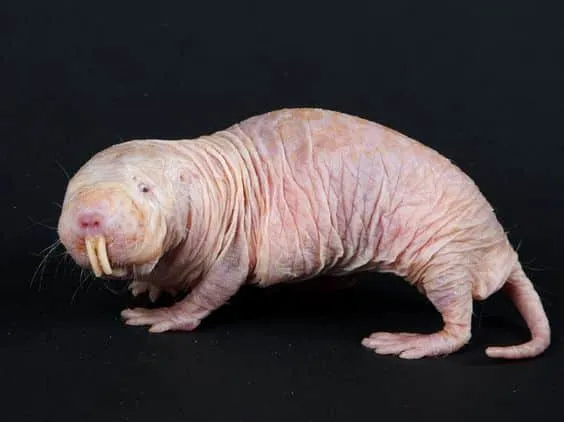Of course! It is astounding how diverse the animal kingdom is. There’s always something new to learn, whether it’s the amazing skills of the tiniest insects or the grand ways of giant creatures. Did you know, for example, that the mantis shrimp has one of the most sophisticated visual systems in the animal kingdom? It can see more colors and polarized light than a person. Or how about the fact that elephants can use infrasound—sound at frequencies lower than human hearing—to communicate with one another?
Every region of the animal kingdom has amazing tales and adaptations, whether it is the complex social structures of ants, the incredible migrations of birds, or the varied organisms’ use of camouflage. Which particular information or animal species most interest you?
Scotoplanes
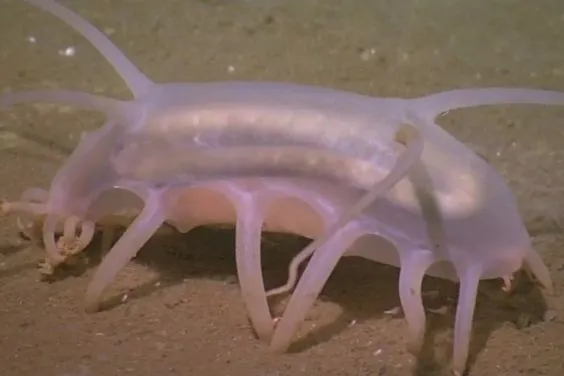
Sea pigs, also known as scotoplanes, are amazing animals! They are distinct from other deep-sea inhabitants due to their unusual look and behaviors. They can move around the bottom thanks to their tube feet, which resemble tiny legs, and eat organic waste and debris that is found in the mud. They assist in recycling nutrients and maintaining the equilibrium of the ecosystem, acting as the ocean floor’s cleanup crew. How nature has developed such distinctive adaptations for surviving in the deep ocean is astounding!
With their six-inch charm, sea pigs, those fashionable ocean creatures, dominate the Atlantic, Pacific, and Indian Oceans. These animals have a funky appearance and toxic skin, which serves as a safety net in the waters full of predators. The big plot twist, though, is this: bring these guys within 4,000 feet of the ocean’s surface, and then poof! We are all in awe of their mystical ways as they transform into a disappearance act inspired by the sea.
Okapi
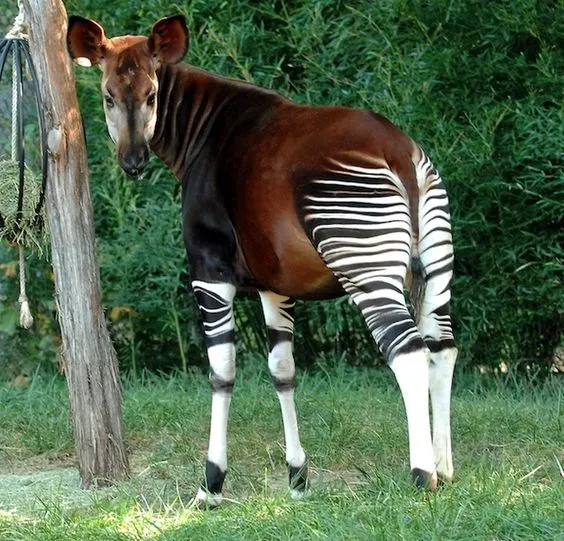
Despite its familial ties to the long-necked giants, the okapi, a cool cousin of the giraffe, has stripes that resemble zebras. These herbivores, which are only found in the Democratic Republic of the Congo, prefer to live alone and roam their wooded territory by themselves. They do, however, make an exception when it comes to matters of the heart, joining together in pairs for the crucial act of mating.
These mysterious animals have coats that are deep brown or reddish in color, and their back legs are the only place where they display zebra-like stripes. They have recently suffered a terrible fate and live an average of 20 to 30 years. Due to habitat destruction brought on by logging operations encroaching on their homes, they are classified as an endangered species. It’s a depressing fact that emphasizes the necessity of coordinated efforts to protect their declining habitats and ensure their continued existence.
Thorny Dragon
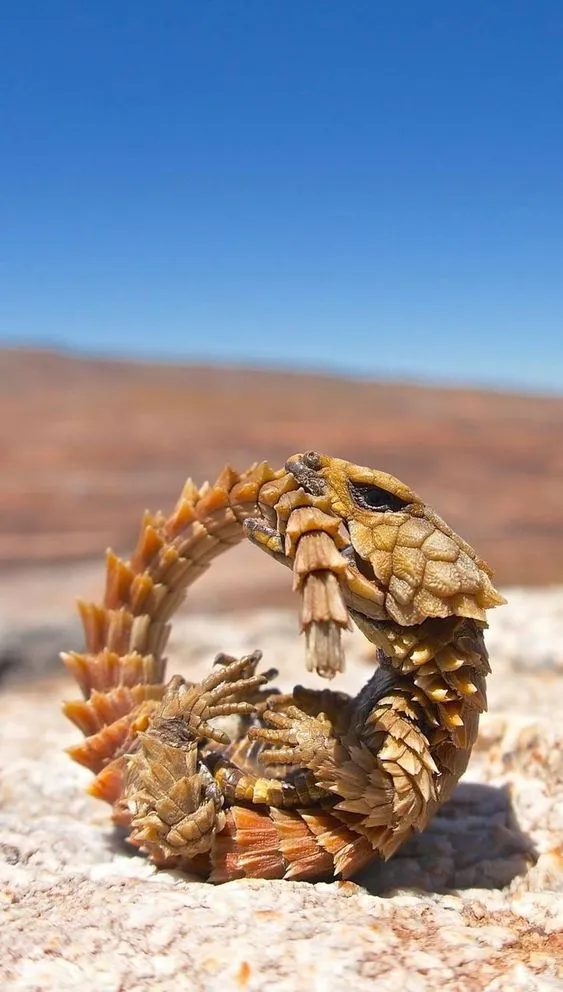
Oh, the thorny dragon, a small reptile found only in Australia’s untamed regions. Its name, “thorny dragon,” originates from the amazing display of enormous, horned scales on its head, which resemble the cunning devils or the legendary dragons of folklore. These distinctive characteristics undoubtedly give this amazing lizard’s appearance a hint of mystery!
The masters of disguise, thorny dragons, blend in perfectly with their dry environment because to their brown and tan outfits that are reminiscent of the desert. For any potential predators, their body armor, a sight of spikes covering every inch, is a warning not to enter. But wait—here’s the real deal: the “false head,” their covert weapon. This soft tissue ball, which is not merely for show, is discreetly tucked away in the nape of their necks. Potential threats receive a bold message from this deft maneuver that reads, “I’m watching you.” These cunning creatures make sure they’re constantly one step ahead in the struggle of survival, keeping their adversaries in the dark.
Shoebill
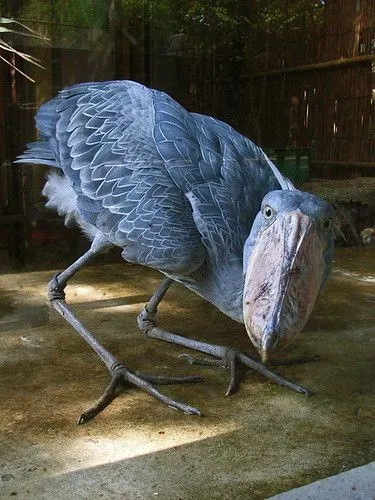
Although the shoebill bird is also known as the “Shoe-billed Stork” or “Whale-headed Stork,” it is closely connected to pelicans and herons because to its characteristic thick bill with bent nail.
Africa’s extensive freshwater marshes are home to shoebills, which consume fish and other wetland animals. Because of their slow-paced lifestyle, these peaceful, lonesome birds are at risk from habitat change.
Indian Purple Frog
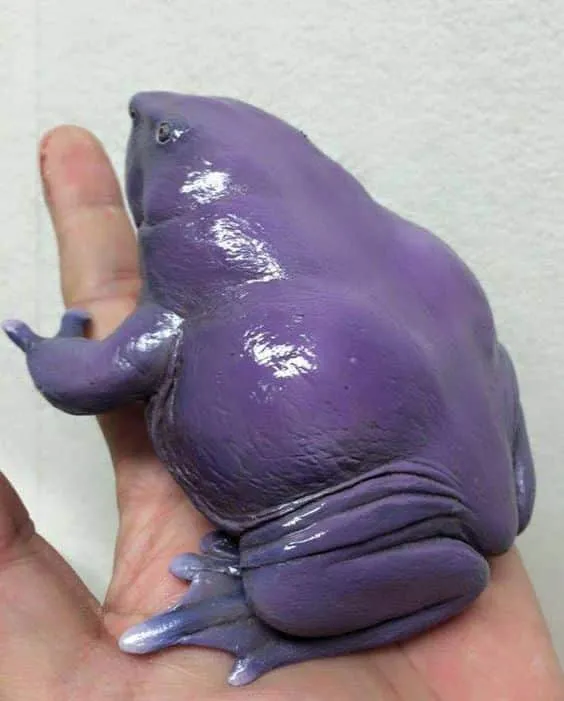
Only found in India’s Western Ghats Mountain range, the Indian purple frog, also known as the pignose frog, is a unique creature that resembles a blob and has a distinctive snout that helps it hunt termites. The Indian purple frogs primarily remain underground, emerging for mating during the monsoon season. Human-related threats such as habitat loss and exploitation for food, medicine, or research pose serious risks to their survival.
Blue Parrotfish
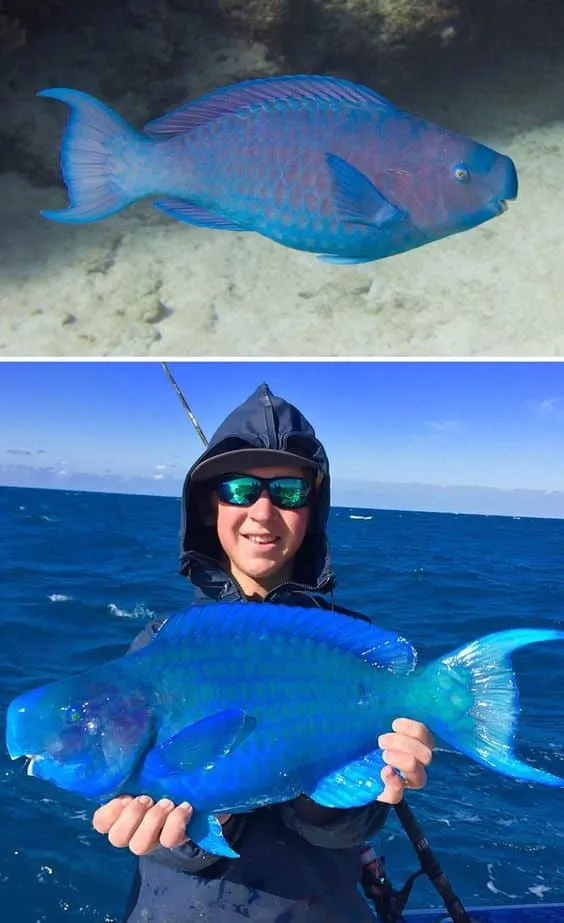
The colorful blue parrotfish travels the Atlantic and Caribbean Seas in schools of 500. It grows a special “beak” that allows it to scrape organisms off rocks for food, and it sports a yellow spot on top of its head that disappears with age.
Eighty percent of the time is spent by parrotfish searching for algae and other creatures on sand, rocks, and coral reefs. Their vulnerable habitats are seriously threatened by pollution and reef erosion.
Bush Viper
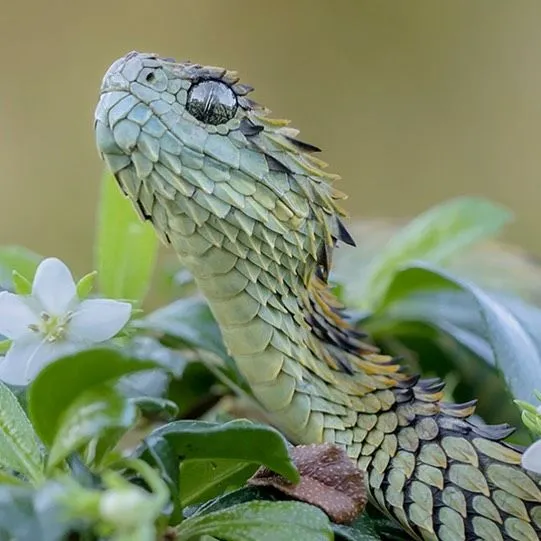
The tropical woodlands of Sub-Saharan Africa are home to seventeen species of bush vipers, which are not found in Southern Africa. Their numbers are dwindling as a result of habitat degradation, but they were once numerous.
Bush vipers can be identified by their triangular heads, despite their diminutive size. They live largely in trees since they are arboreal. Avoiding their bites is essential because they are venomous and there is no readily available antivenom!
Saiga Antelope
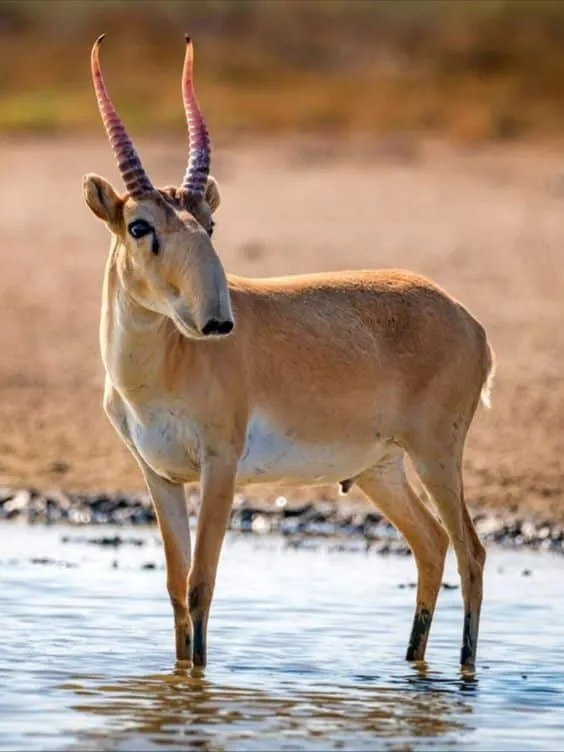
Saiga antelopes, which only exist in a few regions of Kazakhstan and Russia, are seriously threatened. Historical hunting and the use of their horns for medical purposes are to blame for the reduction in their population.
Long horns and a downward-sloping nose that helps with dust filtering and temperature management are two characteristics that set the saiga antelope apart. As herbivores, they cover large areas and have exceptional swimming skills. They are seriously threatened by wolves, foxes, and eagles, among other predators.
Glaucus Atlanticus
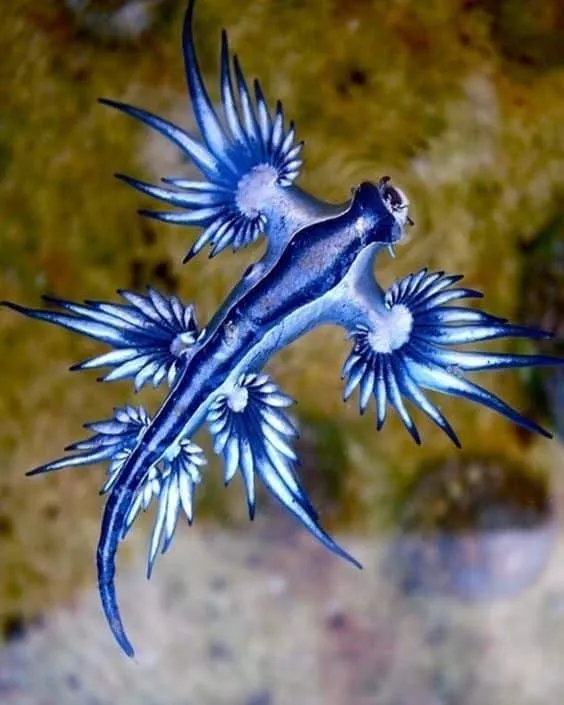
An inch or so in length, the blue sea dragon, or Glaucus Atlanticus, is a little sea slug. It floats gently at the ocean’s surface thanks to a gas-filled stomach sac.
Because of their gas sac’s location and body colors that help them blend in from above and below, blue sea dragons float upside down. They use their serrated teeth to consume open-ocean animals, and as a protection against predators, they store the toxins from their food in their skin.
Pacu Fish
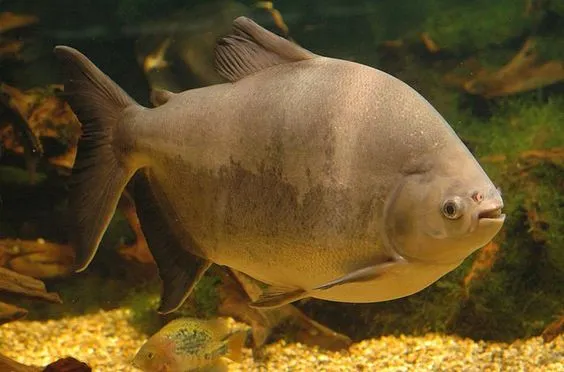
Although they are closely related to piranhas, pacu are very different. The pacu family includes many species. They favor a diet higher in plants than meat and have square, straight teeth with a small overbite. They are also capable of becoming bigger than piranhas.
Originally found in rivers, lakes, and forests in South America, pacus have become invasive since being brought to Papua New Guinea as an exotic species. They are prized as pets, food, and even for game fishing.
Venezuelan Poodle Moth
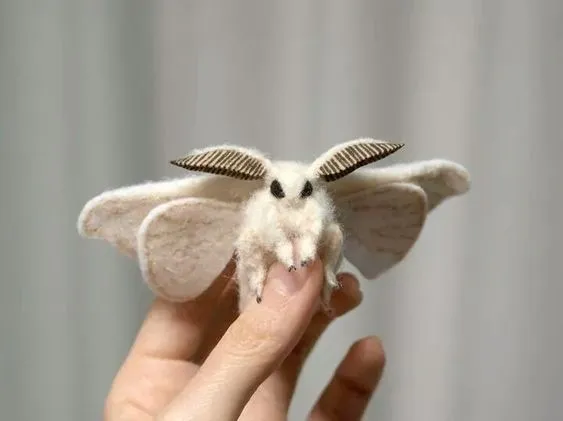
Dr. Arthur Anker found the “poodle moth” in Venezuela in 2009, and it got its name because it looked like a curly-haired dog. Only a small number of the 75 pictures that Dr. Anker took of this fluffy moth were made public.
In fact, scientists are troubled by the lack of visual proof and a single moth for research. No other poodle moth has been found in the area despite additional searches. The scientific community is looking forward to learning more and making new discoveries about this fascinating species!
Mantis Shrimp
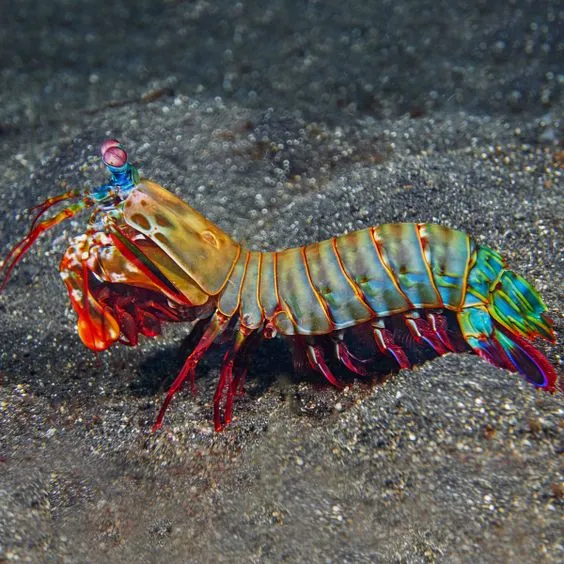
More than 450 carnivorous shrimp species, which are essential predators in shallow tropical marine environments, are referred to as “mantis shrimp.” They demonstrate their ability as predators by using their forelegs to spear, paralyze, or dismember prey.
Mantis shrimps are diverse, however they are frequently evasive, which results in little knowledge about them. But their eyes—which can move independently of one another—stand out as maybe the most sophisticated in the animal kingdom!
Penis Snake
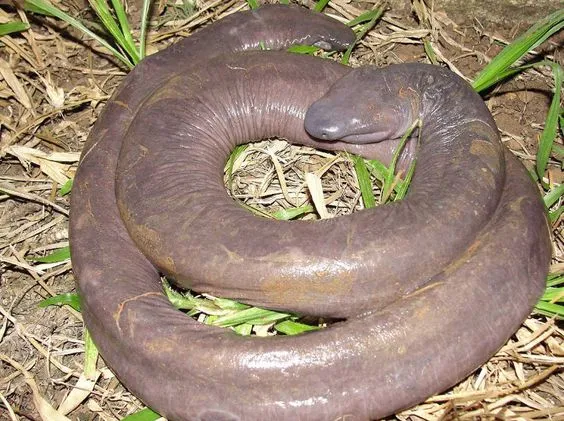
Due to its looks, the Atretochoana eiselti, which is found in the Brazilian Amazon, regrettably earned the moniker “penis snake.” It is a member of the caecilian group, which includes limbless amphibians that resemble snakes but have earthworm-like rings.
The “penis snake” has a fleshy dorsal fin and can reach a maximum length of 30 inches. They eat aquatic invertebrates, worms, and tiny fish. Beyond their swimming prowess and eating habits, scientists still don’t fully understand these critters.
The Panda Ant
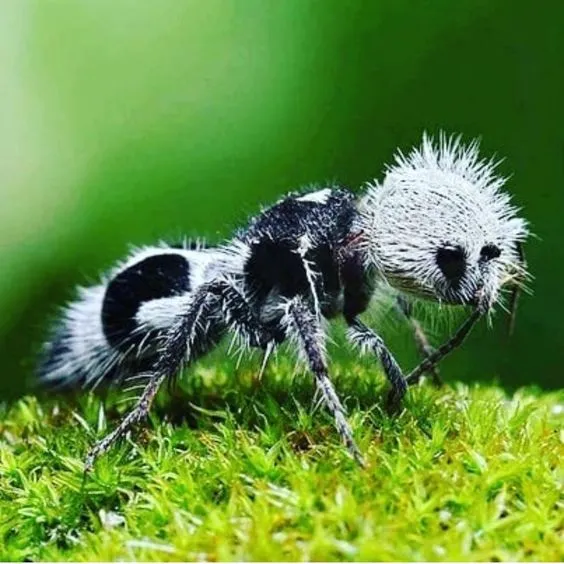
Despite its name, the panda ant is a native Chinese wasp. Predators are alerted to its strong sting by its black-and-white design, which discourages any efforts at ingestion.
In fact, male panda ants can be distinguished from females by their unique color pattern and lack of wings. An unusual feature seen in their mating rituals is the male taking flight and supporting the female in midair during mating!
Goblin Shark
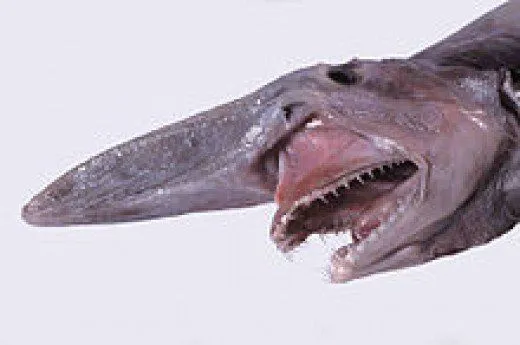
Known as “living fossils,” goblin sharks are members of an extinct animal family that dates back approximately 125 million years. All three of the main oceans have yielded these fascinating species.
The distinctive pink skin, flat snout, nail-like teeth, and flabby body of goblin sharks are their defining characteristics. Even though they seem lethargic, their slow pace helps them with their hunting tactics. Their victim frequently doesn’t notice the slow approach until it’s too late, at which point their quick jaw movement catches them.
Red-lipped Batfish
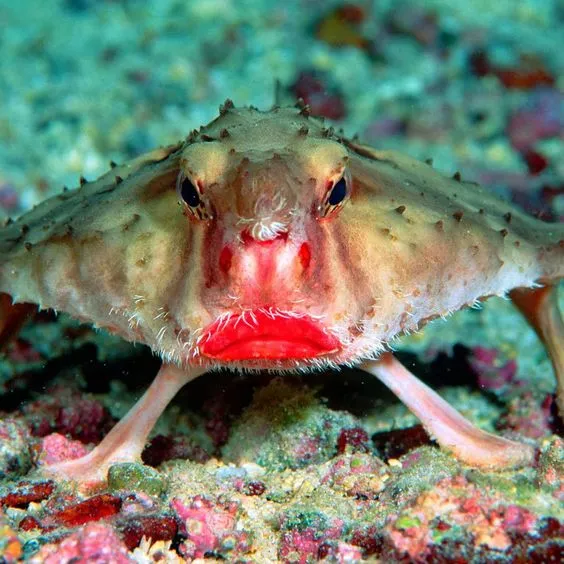
Located close to Peru and the Galapagos Islands, the red-lipped batfish is a poor swimmer and frequently moves around the ocean floor using its fins. It employs a dorsal fin that protrudes from its head with a bright light to entice food closer as part of its feeding strategy rather than swimming speed.
The red-lipped batfish’s main food sources are mollusks, shrimp, crabs, and small fish. One reason for their infrequent encounters is their propensity to stay on the ocean floor.
Dhole
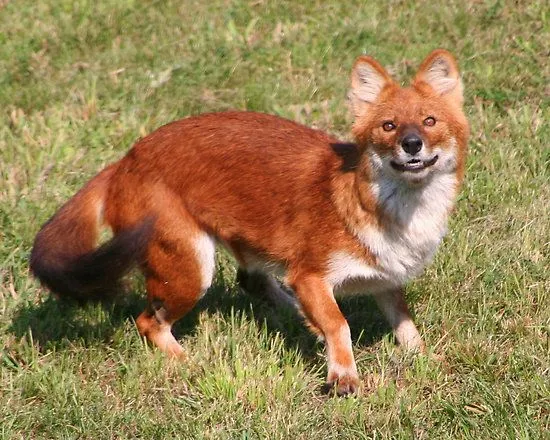
As gregarious creatures that live in clans, dholes frequently hunt alone. Big animals like tigers and leopards pose a serious threat to them in tropical jungles. Tibet, North Korea, and Pakistan are some of their habitats.
Dholes are comparable to wolves and foxes, although they don’t have as strong of a hierarchy of dominance. Although they don’t usually experience food shortages, competition and habitat destruction have made them endangered.
Babirusa
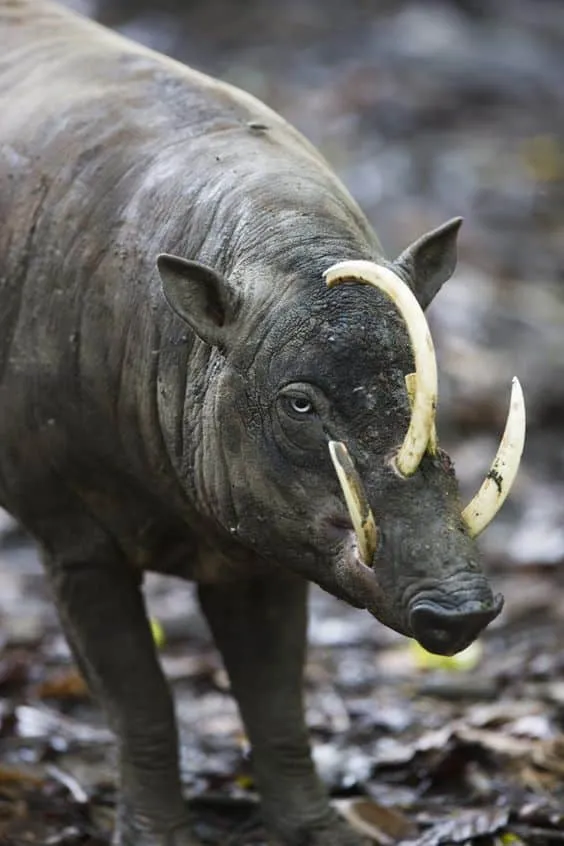
The unique tusks of the Indonesian pig species known as the Babirusa give it the name “pig deer” in Malaysian Malay. Their lower tusks are employed in offensive interactions, whereas their higher ones are used for defense in intraspecific conflicts.
Babirusas, of which there are several species, like tropical jungles close to rivers. While females frequently travel in groups with their offspring, males typically roam alone. Unfortunately, the genus Babirusa is threatened and faces serious dangers.
Fossa
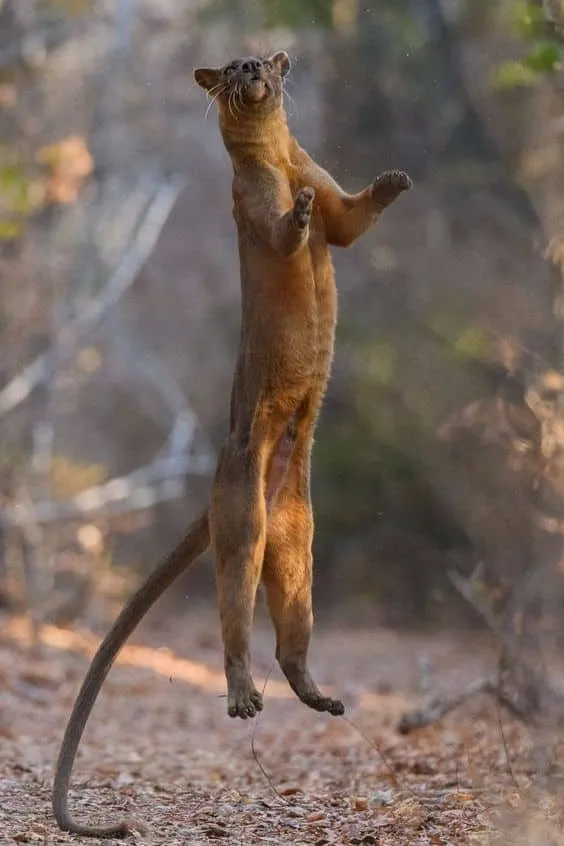
The fossa, a cougar-like creature native to Madagascar, is similar to a cat. It has remarkable climbing abilities, using its claws to climb and descend trees headfirst. Interestingly, mating occurs in trees, frequently on horizontal branches.
Although their primary food source is lemurs, fossas also eat rats, lizards, birds, and other small animals. These animals, which are often solitary but have exceptional communication skills, are active day and night. They interact and communicate with other fossas by sounds, smells, and visual clues.
Naked Mole Rat
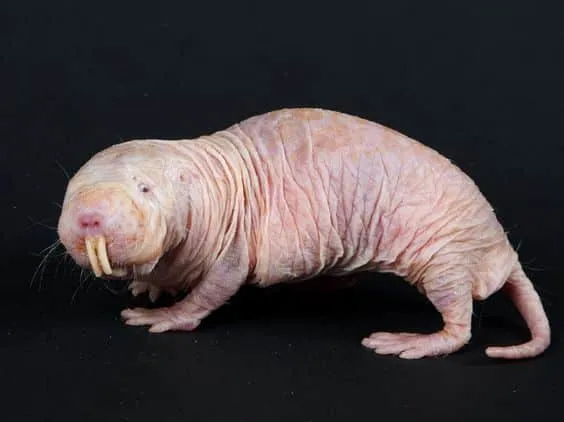
Yes, there are naked mole rats! They live underground and are found in Kenya and the Horn of Africa. These animals can live extraordinarily long lives—up to 32 years—because they have adapted to hostile environments.
In addition to being able to move quickly both forward and backward, naked mole rats are also resistant to cancer and insensitive to skin pain. They mostly eat tubers, and sometimes they eat their own excrement. These animals are threatened by predators such as raptors and snakes.
Irrawaddy Dolphin
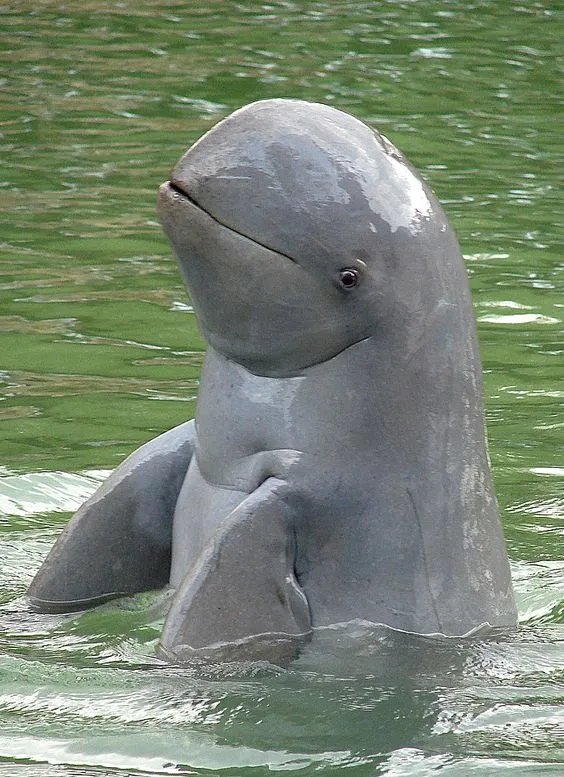
Irrawaddy dolphins typically stay in small groups of two or three and communicate by clicking, creaking, and buzzing. They consume crustaceans, fish, and fish eggs. These dolphins, which prefer habitats along rivers and in estuaries, are at risk because of human activity in these places.
Yeti Crab
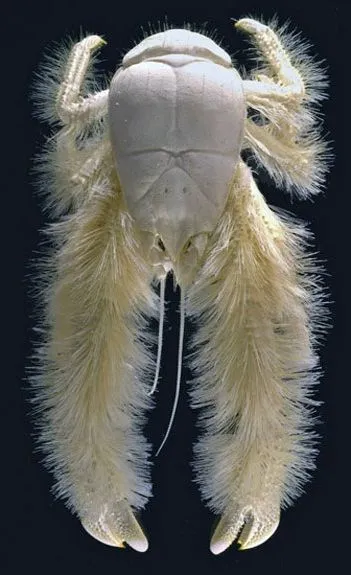
Indeed, the hairy appearance of Yeti crabs is what gave them their moniker. Five species of the Kiwa genus were quickly identified after being discovered in 2005. Throughout the sea floor, they live in a large number of ocean vents.
Although they are mostly carnivores, yeti crabs also eat the bacteria that grow on their legs. There is still plenty to learn about these animals despite continuous investigation. Larger marine animals that hunt on them usually pose the biggest threat to them.
